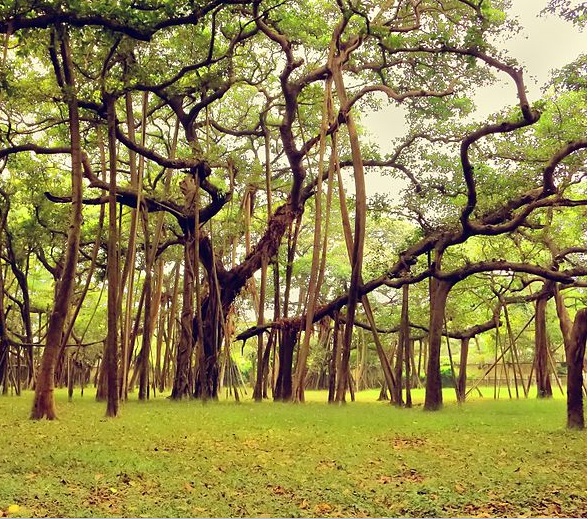Laurel Flynn, a neo-pagan, discussed trees in Pagan and Wiccan traditions, and Saro Kumar talked about trees in the Hindu tradition.
Laurel began by talking about the great variation in pagan beliefs. Wiccan practices need not be nature focused while most pagans (who can be polytheistic, animist or monotheistic) all have some connection to the earth and cycles of nature. Traditionalists base their theology on the mythology of an ancient group such as Celtic, Druidic or Norse. Neo-pagans follow some hybrid of beliefs.
Laurel presented a fascinating and comprehensive PowerPoint about the meaning of trees in the Wiccan and Pagan traditions. Trees are sacred as individuals, in small groups (groves), and in large groups (the forest). Individual trees can be seen as having spirits; people will hang prayers or sacred objects from their branches. Rituals are often held in sacred groves.
Trees have symbolic meanings in the Pagan world. Norse mythology conceives the entire universe as Yggdrasil, an Aspen Tree which connects the separate realms of Gods, People, Land of the Dead, and Dwarves. Trees are central to the Wiccan mythic cycle of the year: the “Oak King” is transcendent in the winter (dark), the “Holly King” in the summer (light). Today, most Wiccan, Pagan, and neo-Pagan worship is held outside in natural settings, and stewardship of the Earth is a central value.
Trees have spirits and specific trees can have magic powers: magical systems of divination (oghams and runes) are inscribed on wood. The Tree of Life is a powerful symbol in the Pagan world as it is in other faiths. Certain trees such as redwood sequoias, cedars of Lebanon, and a bristlecone pine in Utah are revered as precious.
Trees are symbolic of our spiritual paths: they tie things together in the “web of life;” they are mythic and mysterious yet found everyday, everywhere; they are a part of ancient cultures/imagery that have stayed with us as cultures have blended, evolved, and even become more secular. When we bring trees inside our homes to decorate them we participate in a long tradition of hanging things from trees—prayers, icons, offerings, stars.
Saro noted that trees have a special place in India because anything that benefits humanity is revered in Hinduism. Trees have a magical aspect: they take carbon dioxide into their leaves and produce the oxygen we need to breathe.
The Banyan tree, a non-edible fig-producing tree, is the national tree of India. It sends out its branches in all directions and from those branches drop roots to the ground providing forest-like shelter for many species of animals. Villages in India often have a centrally located Banyan tree which provides a shaded place for village elders to meet and resolve problems.
Buddha found Enlightenment under a Banyan tree. Symbols of longevity and fertility, Banyan trees often grow near temples; people tie strings on these trees and have faith that their wishes will be granted. As these trees are revered, burning Banyan wood is forbidden. Saro showed us beautiful art drawn on large Banyan leaves.
Other trees are revered in India because every part is useful. Neem trees are planted in the direction of the yearly winds as they produce a maximum amount of oxygen, which people want to blow into their houses. Seeds produce neem oil and soap, which have insecticide and antibacterial properties. Bitter green neem juice is used as medicine. High in tannin, neem bark sap is used to dye leather. Its leaves keep insects from closets; its twigs were once used as toothbrushes.
The Coconut is another such tree. Trunks are used for bridges, husks made thick ropes to pull temple chariots, and the juice of young green coconuts is so nutritious it was used as an IV fluid to treat dysentery. The white part of the fruit is made into coconut milk and coconut oil, which is healthy for cooking and for applying to the skin. Coconut leaves are used as ornaments and to make wedding tents.
Sandalwood trees were actually nationalized by the government of India at one time because they are treasured and used for religious purposes. At weddings guests are welcomed with sandalwood, red powder, and flowers.
Mango trees are also used for religious purposes; it is auspicious to bend mango leaves around doorways at weddings.
Saro brought some frankincense (a tree resin), and some examples of carved wooden utensils.
A lively question and answer period followed. Betty Lamb thanked Laurel and Saro and gave each a packet of hand-drawn tree note cards.
Penny Hart closed the meeting with a blessing, expressing our gratitude for trees that are the source of life.

